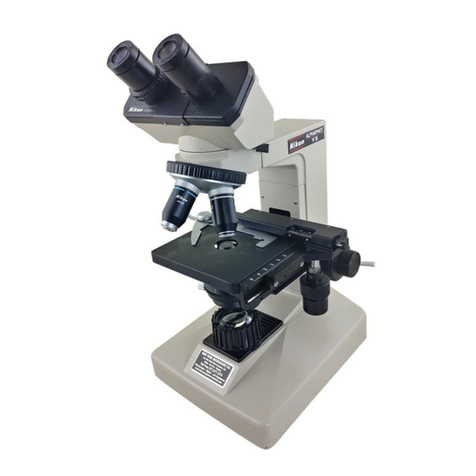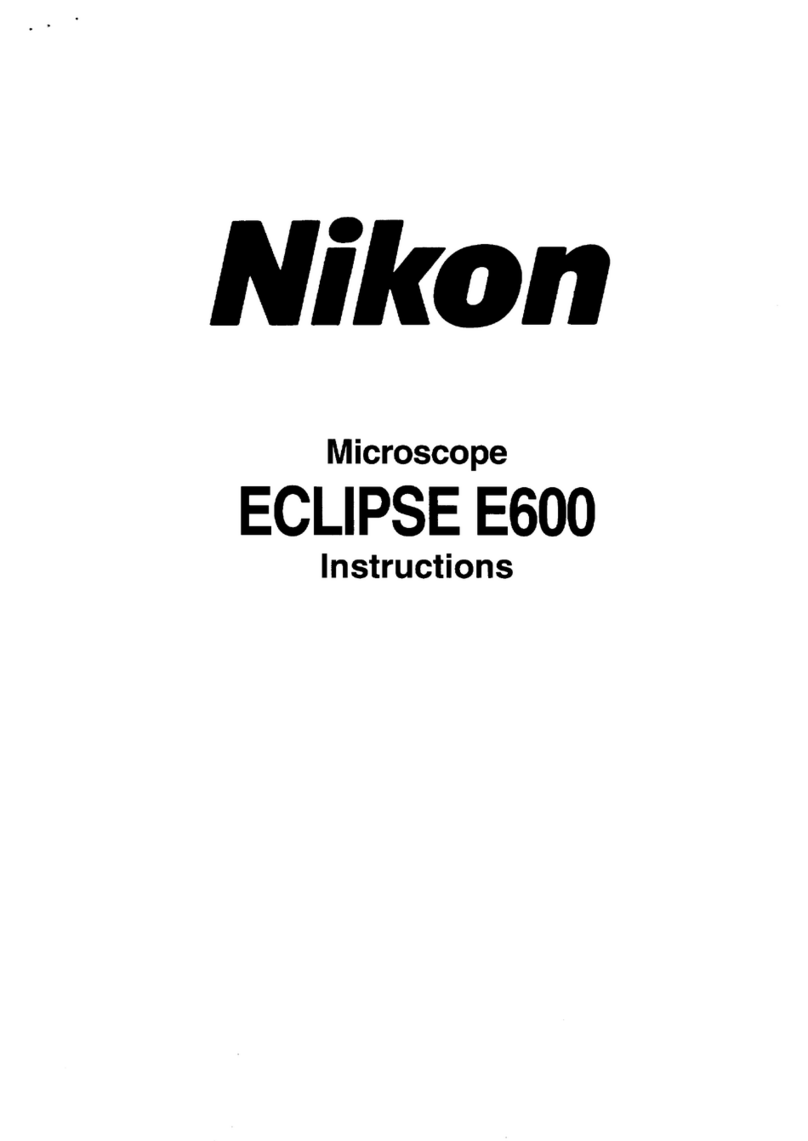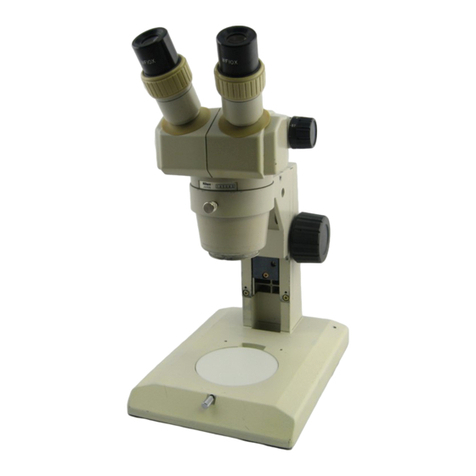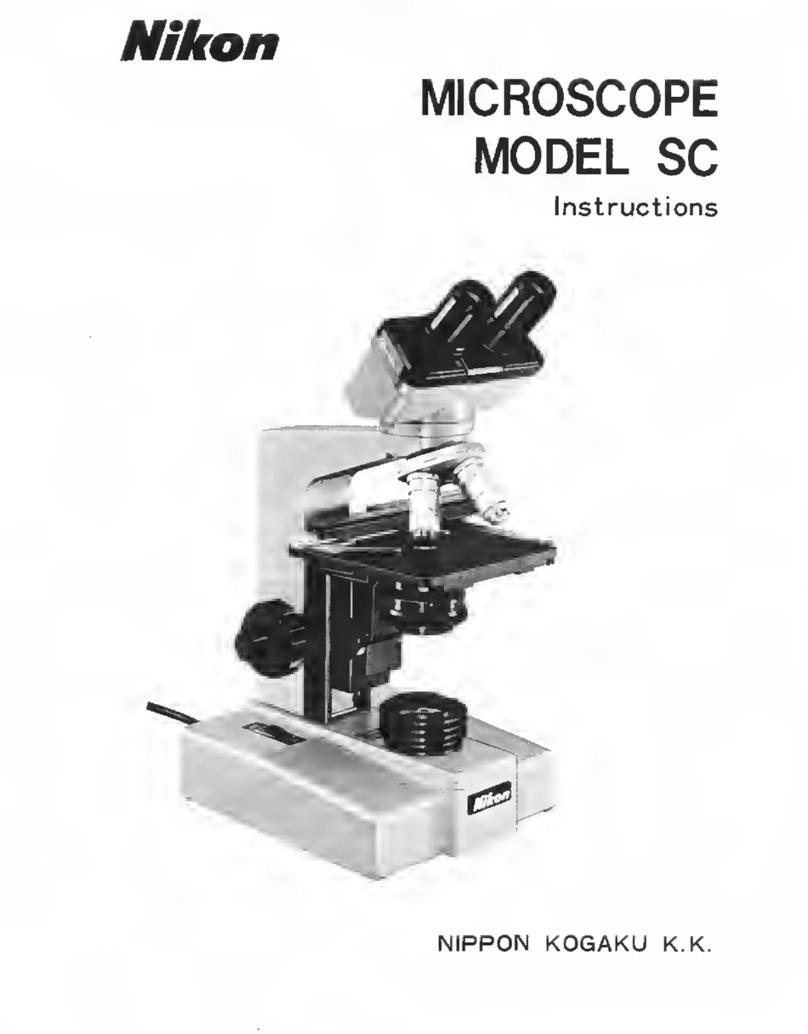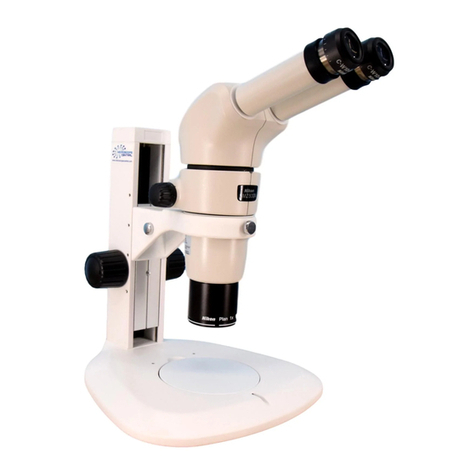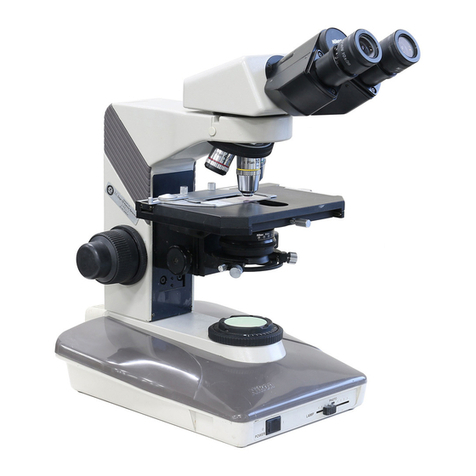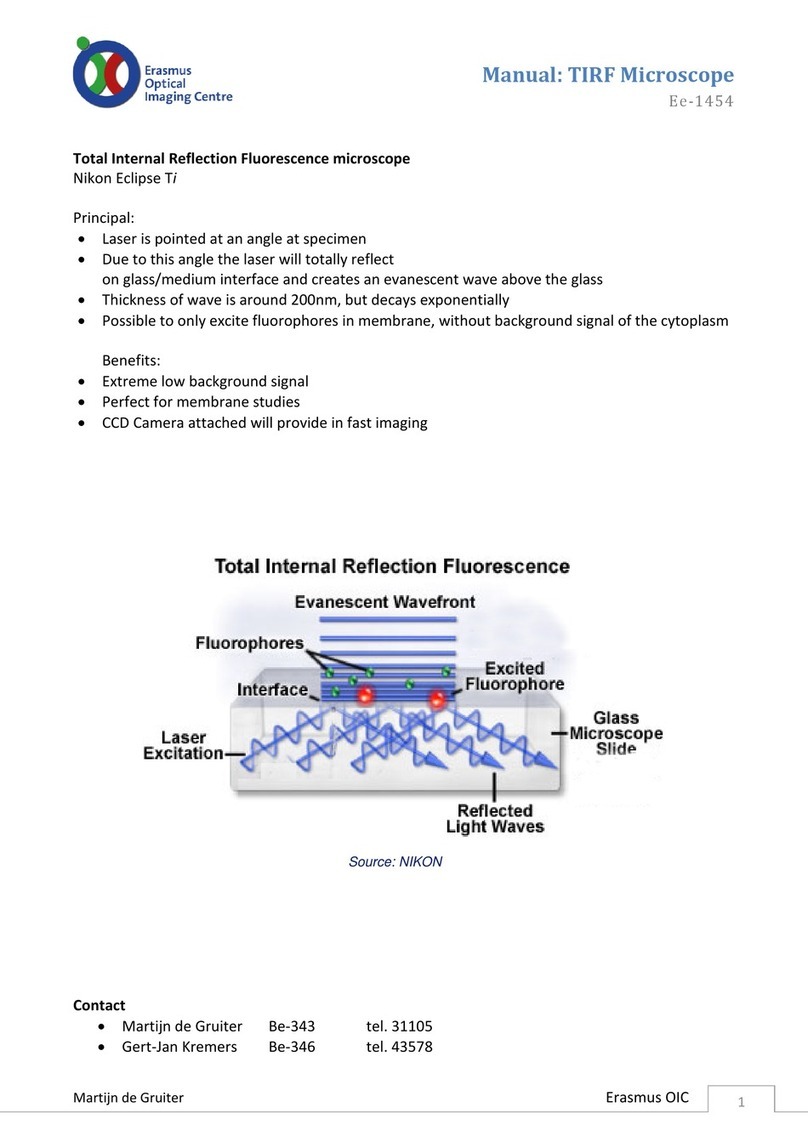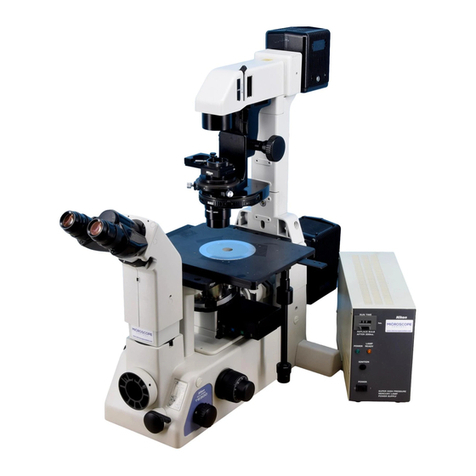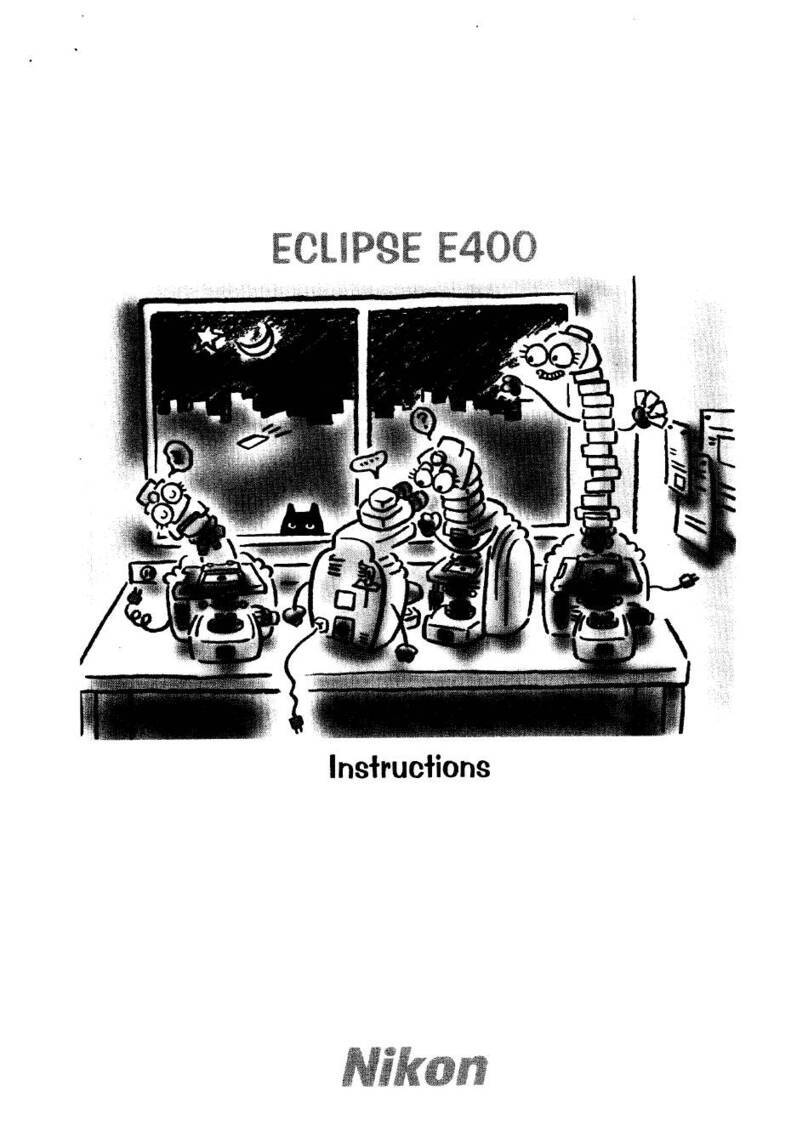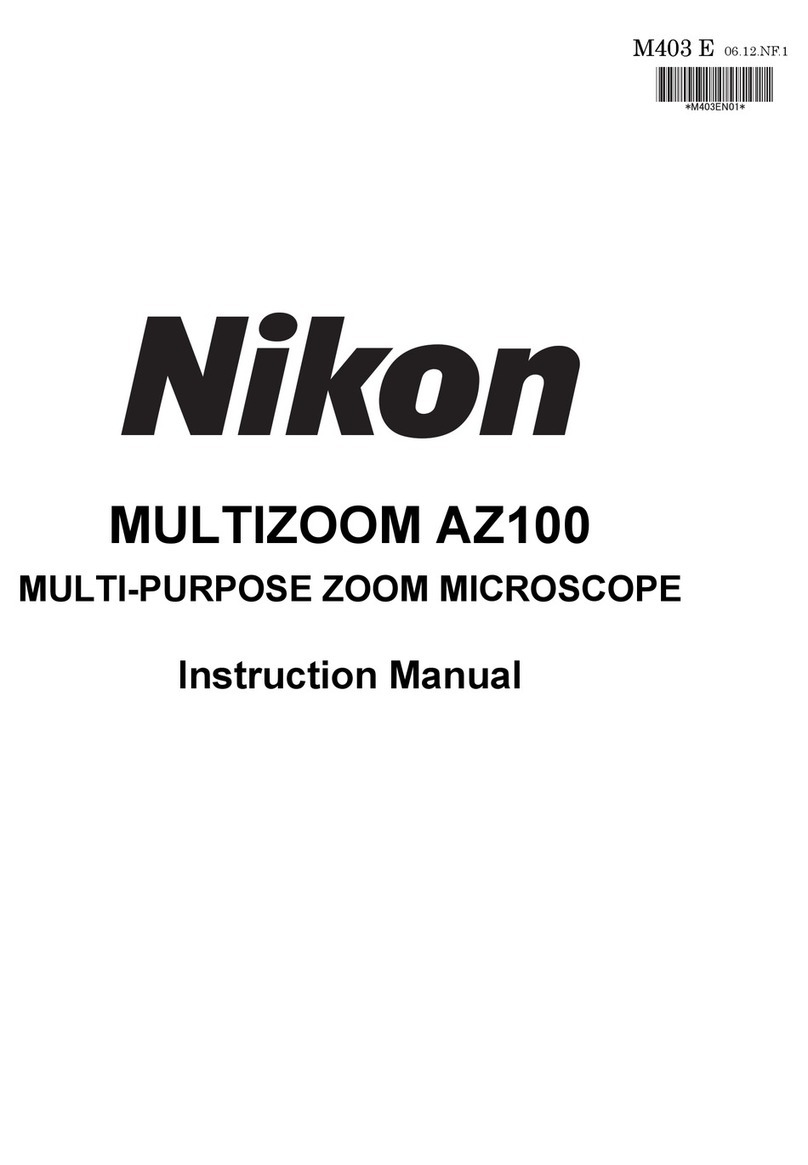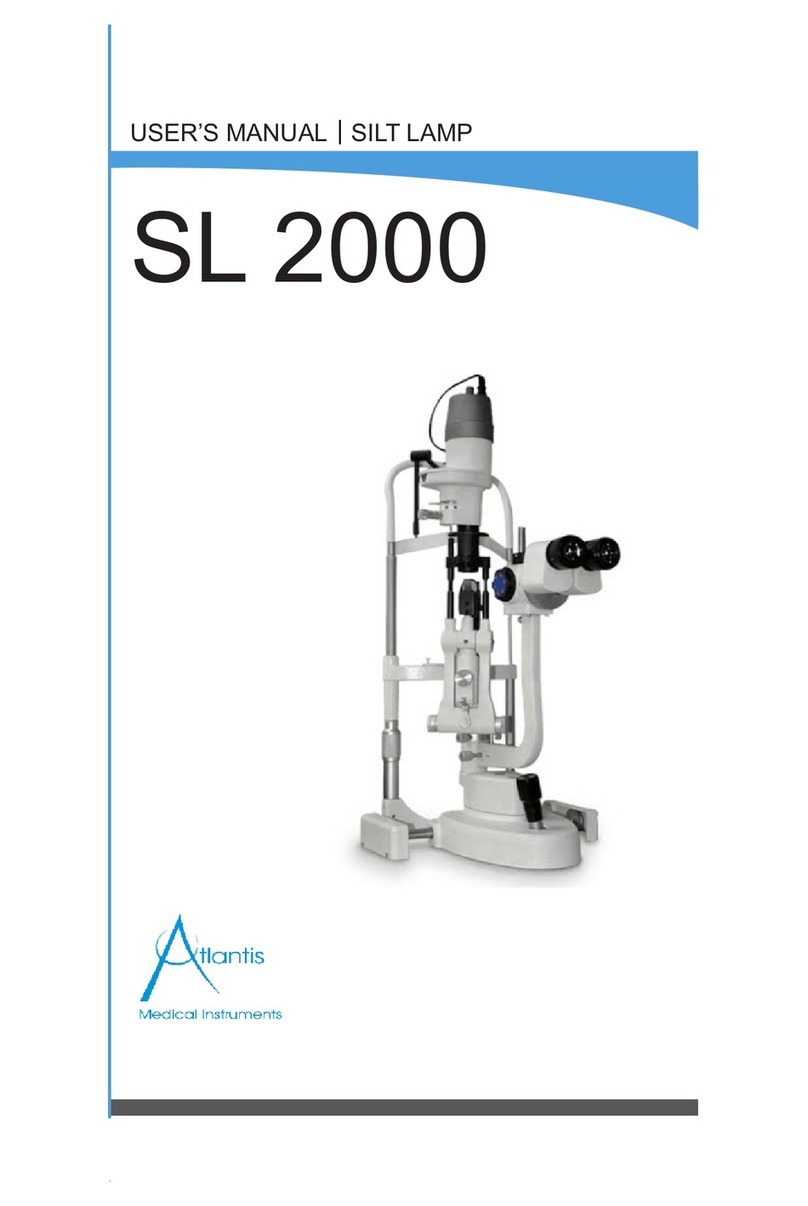
Safety Precautions
4
1. Isolate the products from the power source during assembly, connection/disconnection of cords,
lamp replacement, and maintenance
To prevent electric shock and/or malfunctions, always turn off the power switches of the product (press
to the “O”position) and unplug the power cord from the wall outlet before assembly, connecting or
disconnecting of cords, lamp replacement, and cleaning of the product and the objective.
2. Cautions in replacing lamps
To prevent burn injuries, wait at least 30 minutes after the lamp is turned off to give it sufficient time to
cool when replacing lamps. And, to avoid electric shock or malfunctions, never attempt to replace lamps
without turning off the power switches for the product and the peripheral devices (press them to the “O”
position). And then, unplug the power cords from the wall outlet.
Make sure the lamphouse cover is securely fitted to the lamphouse after replacing lamps. Never turn on
the lamp while the lamphouse cover is open.
When you dispose of the replaced lamp, do not break it up. Instead, dispose of the used lamp as special
industrial waste or dispose of it according to the local regulations and rules.
3. Use the specified lamp
The product's built-in power source is used for the halogen lamp that is a light source for the diascopic
illumination. A halogen lamp up to 6V-30W can be lit. But, always use the specified halogen lamp. Using
an unspecified lamp may cause malfunctions.
• Specified lamp: 6V-30W (PHILIPS 5761)
4. Prevent contact with moisture
Never allow water to come into contact with the product. And do not use the product in circumstances
where the product is splashed with water. Water splashed onto any component of this product may
cause short circuits, resulting in malfunction or abnormal over heat. If the product is subject to contact
with water, turn off the power switches for the product and the peripheral devices (press them to the
“O”position). And then, unplug the power cords from the wall outlet. And then, wipe off the water with
a piece of dry cloth. If water enters a component, immediately suspend use of this product, disconnect
the power cord from the outlet, and contact your nearest Nikon representative.
5. Do not place any object on top of the product
Do not place any object on top of the product or cover it with a piece of cloth or so on. The system
temperature will rise, resulting in malfunctions.
6. Cautions in assembling, installing, and carrying the product
• Take care to avoid pinching your fingers or hands during the product assembly and installation.
• Scratches or fouling such as fingerprints on optical components (such as lenses and filters) will
degrade microscope images. Be careful to avoid scratches or direct contact with the lenses and
filters when assembling the product.
• The main unit weighs approximately 11 kg. Grasp the main unit by the handle on the back of the
product and the recess at the base on the opposite side from the handle.
• Remove all attachments (if mounted) from the microscope before carrying the microscope.
• Do not install the product in a locker or cabinet.
CAUTION


